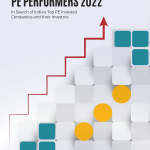Practus’ assisted Project H2O in raising ~$4 million from CSR arms of large global corporations and reducing Opex loss per plant by 26%.
| Client Name | Industry | Ownership | Management | No. of Employees | ROI On Fee | Size | Project Duration |
| Project H2O | Social Enterprise (Water) | CSR-NGO Joint Venture | Professional | ~50 | 6.7x | ~$3 million | -24 months |
About The Company
Project H2O is a social enterprise joint venture of the CSR arm of a Fortune 100 company and a local NGO, providing safe drinking water at affordable rates, to rural communities without piped water access. Project H2O reduces infant mortality due to diarrhea; the #1 cause of diarrhea is unclean drinking water.
Practus’ Role
- Evolved from province level MIS to plant level MIS within the first 4 months of engagement.
- Designed and implemented a variable incentive program for salespersons to boost end-customer ‘stickiness’, price realization, and volumes.
- Created framework to measure and improve the payback on customer awareness and marketing spends.
- Automated linkage of plant operating and maintenance data with operating IT system and financial reporting software.
- Shut non-performing plants with poor future ability to scale and re-directed grants to more viable communities.
- Handheld business teams to improve business planning and forecasting capabilities.
- Provided monthly dashboard to donors and project sponsors, boosting marketing teams’ ability to raise funding from existing donors.
Impact Delivered
- Increased social impact by 37% on the existing base of grants and equity funding from sponsors.
- Assisted in raising ~$4 million from CSR arms of large global corporations by providing high quality, real-time impact reporting of impact delivered and better transparency around end-use of funds.
- Reduced opex loss per plant by 26% through control on power consumption costs and negotiation on procurement prices of filters and membranes.
- Improved plant productivity by 16% through electronic measurement of water dispensed (eliminating revenue leakage) and creating standards for standard output of water produced to the power consumed.
- Improved average volume by 18% to end customers, through design and implementation of a highly targeted loyalty program at a household level.


